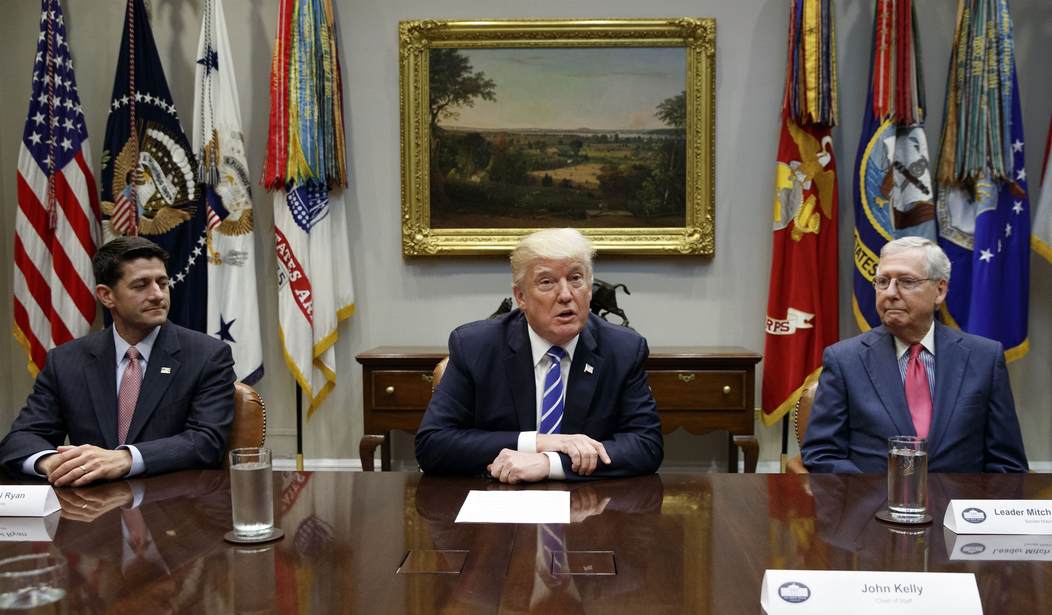Our national debt is $20.5 trillion and heading to $30 trillion by 2030. You'd think that this would be a wake-up call for Republicans, who control all three branches of government, to finally take spending seriously. Instead, they want to get rid of the spending caps meant to constrain lawmakers' uncontrollable appetite to spend.
The spending caps were implemented as part of the Budget Control Act of 2011. The deal itself was the result of a vigorous debt ceiling battle between those who wanted the unconditional ability to raise the debt limit and those who called for fiscal discipline going forward in exchange for additional debt at the time. In the end, the pro-debt people got their increase in the authority of the federal government to borrow even more money, and the pro-fiscal restraint ones got spending caps. Though the caps weren't strict enough (they mostly reduced the growth of additional spending, as opposed to imposing actual cuts), they turned out to be the most fiscally responsible policy in decades.
Now, you may say that being the most successful at restraining spending isn't that impressive when there haven't been many, if any, real attempts to control spending. Indeed, the Republicans have, time and time again, proved that when they're in power, they like to spend just as much as Democrats do. At the margins, they want to spend money on different things than Democrats -- they like military spending, government spying and immigration crackdowns a lot more than liberals do -- but for the most part, they actually love wasting cash on the same stuff. Both sides support farm subsidies, unchecked improper payments and more money for unaccountable infrastructure projects, museums and opera houses. Many of these things only benefit the rich.
Recommended
The truth remains that the BCA caps were pretty effective at tying lawmakers' hands. When the act was passed, the Congressional Budget Office projected that the spending limits would save $971 billion over ten years. Again, these were not real cuts but mostly restraints on the growth of spending, meaning that spending was still going up from year to year. But even that was too much for big spenders, who repeatedly and successfully managed to circumvent the caps. A recent paper titled "Reform the Budget Control Act Spending Caps," by The Heritage Foundation's Romina Boccia and Justin Bogie, documents the betrayal in numeric details. Boccia and Bogie rightfully paint the portrait of a Congress whose members don't care much for the constraints they've imposed on themselves and are happy to break the promises they've made to their constituents.
In spite of these setbacks, the BCA and its budget caps did put a dramatic stop to the spending spree during its first two years. Now Republicans want to bust the caps by almost $190 billion over two years. As always, their stated reason is that defense spending isn't large enough, despite the $602 billion the Office of Management and Budget projects we'll have spent on national defense in 2017.
As designed, the BCA imposes separate caps on defense and non-defense spending, as opposed to one overall cap on all discretionary spending. As a result, it requires fiscal restraint from defense hawks, as well as non-defense spending advocates. This is the way it should be. Contrary to what Republicans believe, defense spending isn't immune to waste, fraud and abuse or a poorly designed spending strategy, which leads to malinvestment and outdated military goals. An increase in defense spending doesn't necessarily lead to more security, either.
The admitted flaw in my reasoning is that lawmakers have a profound disrespect for budget rules and have no qualms about suspending them when inconvenienced. As a result, we've repeatedly witnessed the Republican defense hawks make deals with Democrats amounting to "you scratch my back, and I'll scratch yours." The result is always that both defense caps and non-defense caps are busted at the expense of fiscal credibility and future generations.
This is about to happen again. Shame on those who are about to engage in a spending frenzy during a time of relative peace, prosperity and high debt. Their behavior is unpardonable and will be paid for dearly by generations of American children.

























Join the conversation as a VIP Member